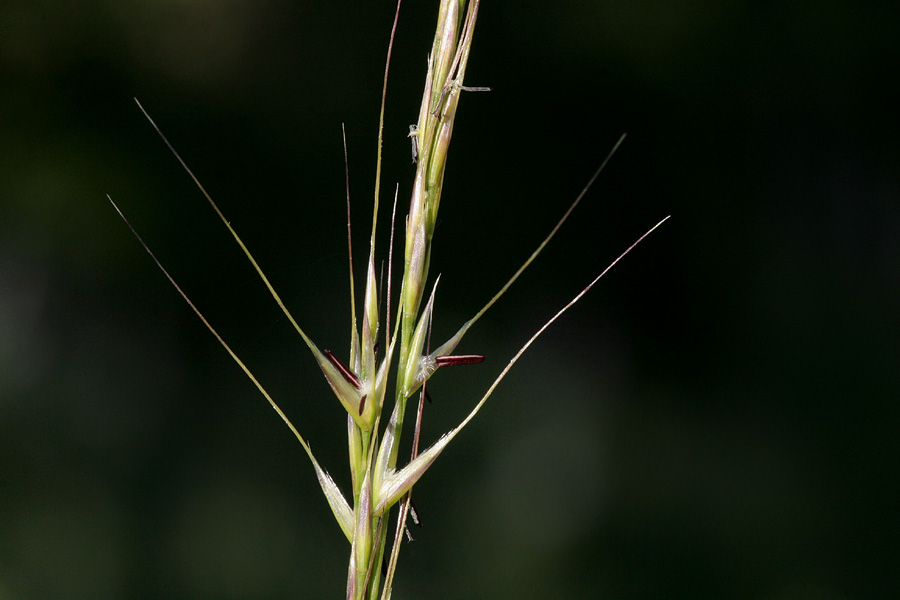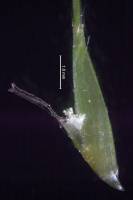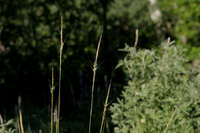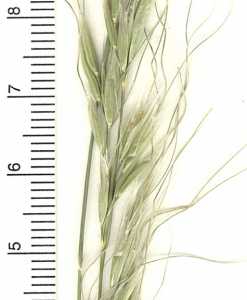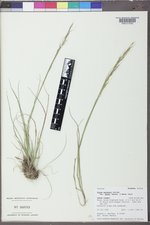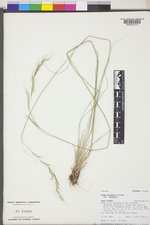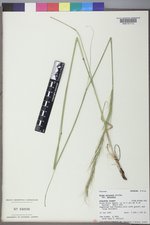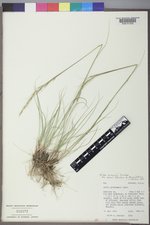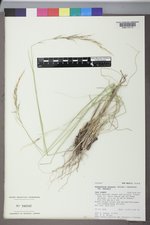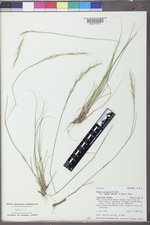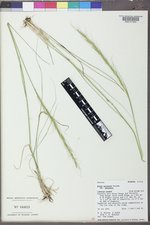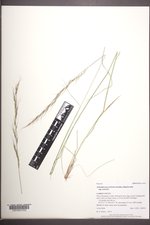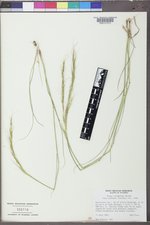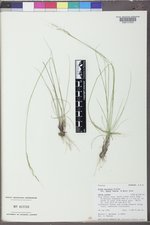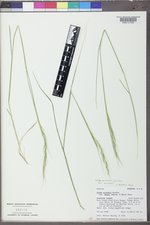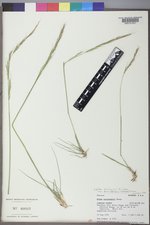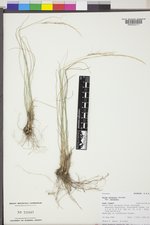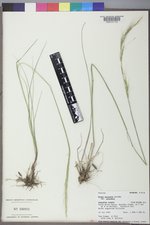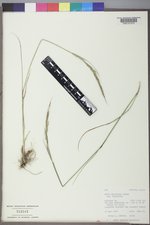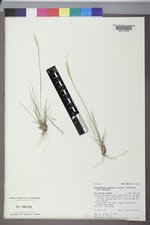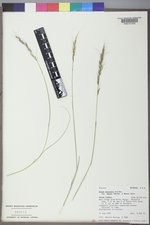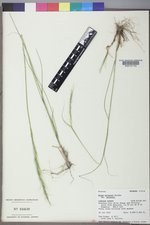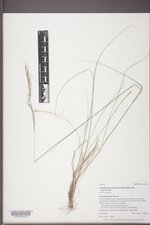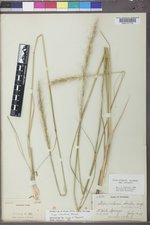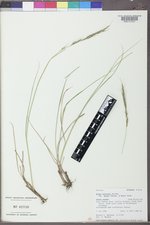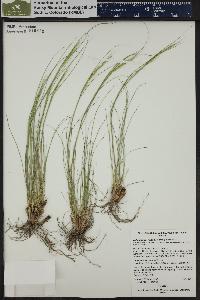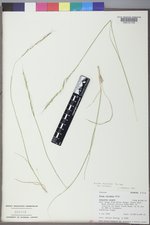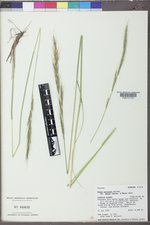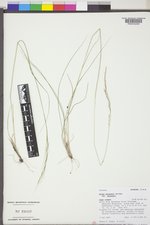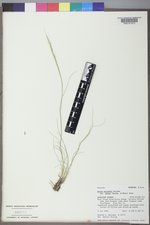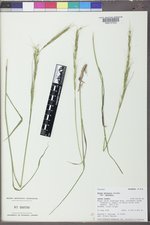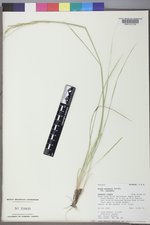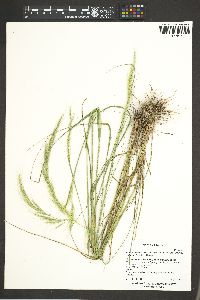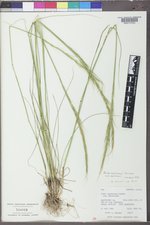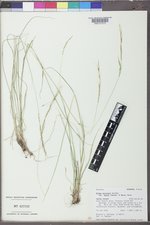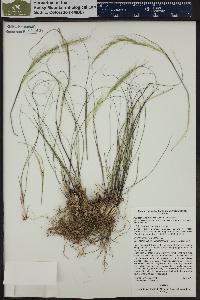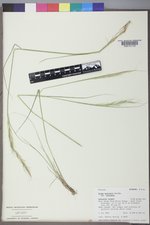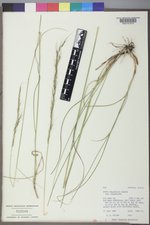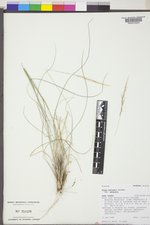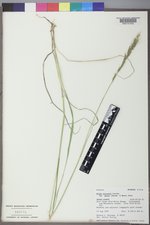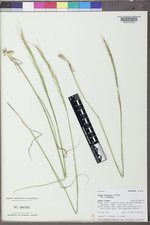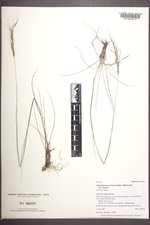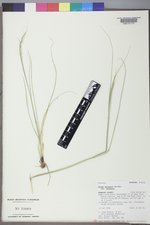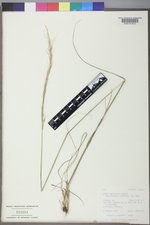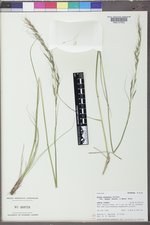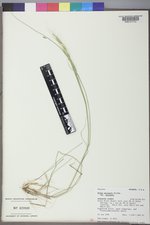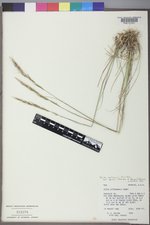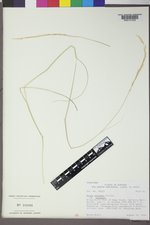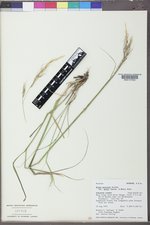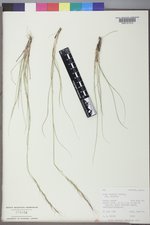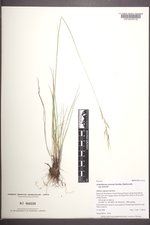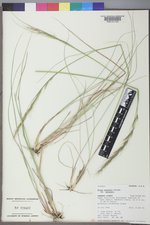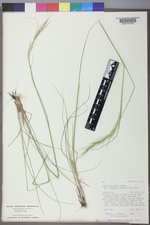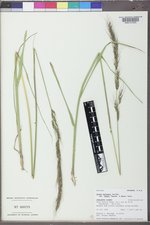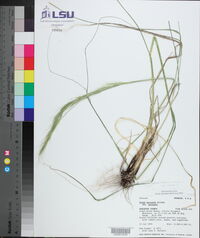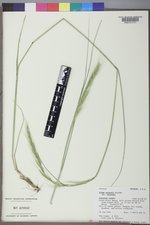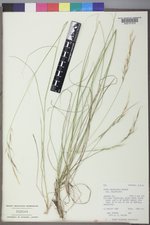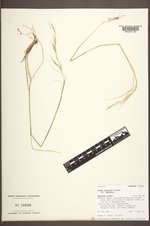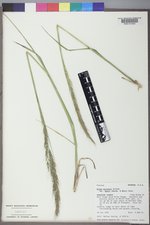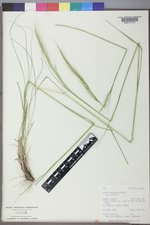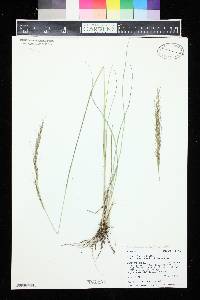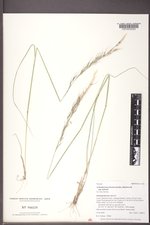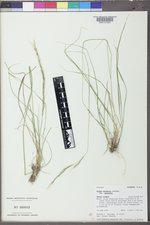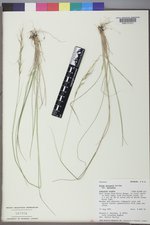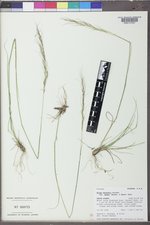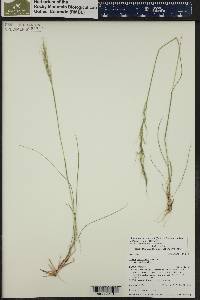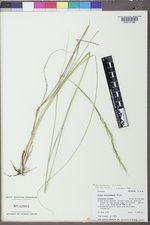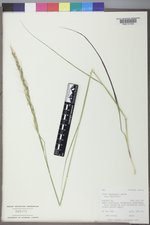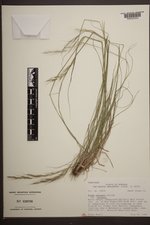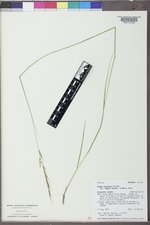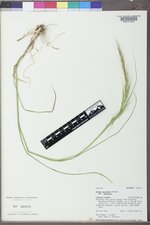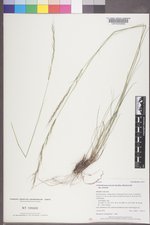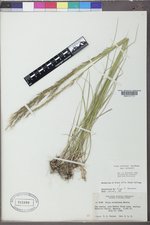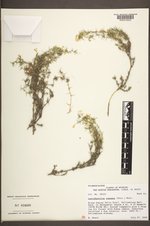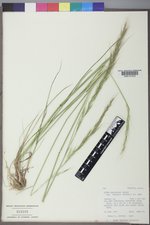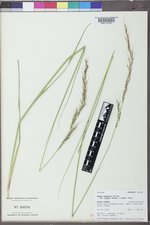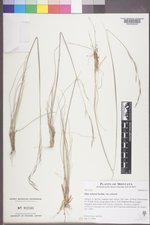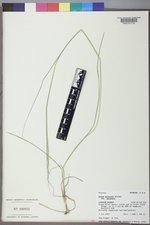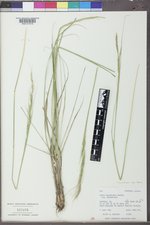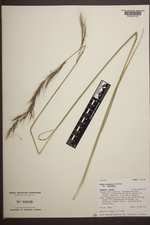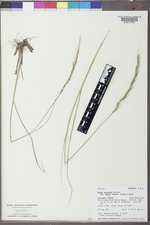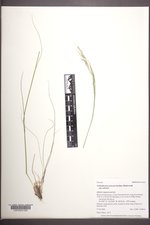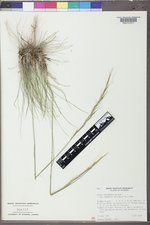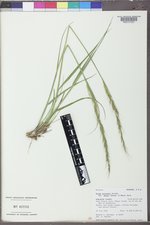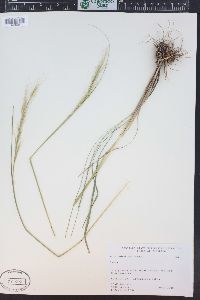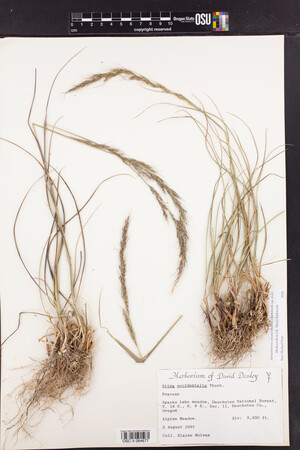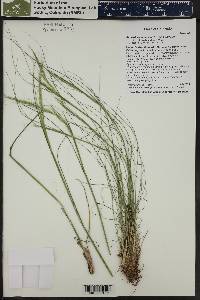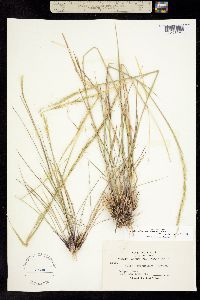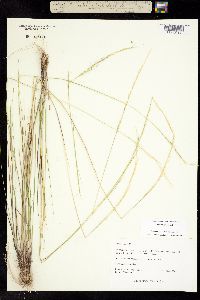Achnatherum nelsonii
|
|
|
|
Family: Poaceae
Columbia needlegrass, more...Nelson's Rice Grass, Nelson achnatherum
|
Plants cespitose, not rhizom-atous. Culms 40-175 cm tall, 0.7-2.4 mm thick, lower cauline internodes usually glabrous, sometimes slightly pubescent below the lower nodes; nodes 2-5. Basal sheaths glabrous or sparsely to densely pubescent, margins sometimes ciliate; collars glabrous or somewhat pubescent, without tufts of hair on the sides, collars of the flag leaves glabrous or sparsely pubescent; basal ligules 0.2-0.7 mm, membranous, truncate to rounded, usually not ciliate; upper ligules 1-1.5 mm, acute; blades (0.5)1.2-5 mm wide. Panicles 9-36 cm long, 0.8-2 cm wide; branches ascending to appressed, straight. Spikelets appressed to the branches. Glumes 6-12.5 mm long, 0.7-1.1 mm wide; lower glumes exceeding the upper glumes by 0.2-0.8 mm; florets 4.5-7 mm long, 0.6-0.9 mm thick, fusiform; calluses 0.2-1 mm, blunt to sharp, dorsal boundary of the glabrous tip with the callus hairs almost straight to acute; lemmas evenly hairy, hairs at midlength 0.5-1 mm, hairs at the apices to 2 mm, erect to ascending, apical lobes 0.1-0.4 mm, membranous, flexible; awns 19-45 mm, persistent, twice-geniculate, first 2 segments scabrous or with hairs shorter than 0.5 mm, terminal segment straight; paleas 2-4 mm, 1/3-2/3 as long as the lemmas, pubescent, hairs usually not exceeding the apices, veins terminating before the apices, apices rounded; anthers 2-3.5 mm, dehiscent, not penicillate. Caryopses 3-4 mm, fusiform. 2n = 36, 44. Achnatherum nelsonii grows in meadows and openings, from sagebrush steppe and pinyon-juniper woodlands to subalpine forests, at 500-3500 m. It flowers in late spring to early summer, differing in this respect from A. perplexum. It is sometimes sympatric with A. lettermanii, from which it differs in its shorter paleas and wider leaves, and its tendency to grow in deeper or less disturbed soils. It differs from A. lemmonii in having wider leaf blades, shorter paleas, and membranous lemma lobes, and from A. nevadense and A. occidentale in its scabrous awns and the truncate to acute boundary of the glabrous tip of the callus with the callus hairs. The two subspecies intergrade to some extent. There is also intergradation with Achnatherum occidentale, possibly as a result of hybridization and introgression. Dr. David Bogler, USDA NRCS PLANTS Database Perennials, Terrestrial, not aquatic, Stems nodes swollen or brittle, Stems erect or ascending, Stems caespitose, tufted, or clustered, Stems terete, round in cross section, or polygonal, Stem internodes hollow, Stems with inflorescence less than 1 m tall, Stems, culms, or scapes exceeding basal leaves, Leaves mostly basal, below middle of stem, Leaves mostly cauline, Leaves conspicuously 2-ranked, distichous, Leaves sheathing at base, Leaf sheath mostly open, or loose, Leaf sheath smooth, glabrous, Leaf sheath and blade differ entiated, Leaf blades linear, Leaf blades 2-10 mm wide, Leaf blades mostly flat, Leaf blade margins folded, involute, or conduplicate, Leaf blades mostly glabrous, Ligule present, Ligule an unfringed eciliate membrane, Inflorescence terminal, Inflorescence a dense slender spike-like panicle or raceme, branches contracted, Inflorescence solitary, with 1 spike, fascicle, glomerule, head, or cluster per stem or culm, Flowers bisexual, Spikelets pedicellate, Spikelets dorsally compressed or terete, Spikelet less than 3 mm wide, Spikelets with 1 fertile floret, Spikelets solitary at rachis nodes, Spikelets all alike and fertille, Spikelets bisexual, Spikelets disarticulating above the glumes, glumes persistent, Spikelets disarticulating beneath or between the florets, Rachilla or pedicel glabrous, Glumes present, empty bracts, Glumes 2 clearly present, Glumes distinctly unequal, Glumes equal to or longer than adjacent lemma, Glumes 3 nerved, Lemma 5-7 nerved, Lemma body or surfa ce hairy, Lemma apex dentate, 2-fid, Lemma distinctly awned, more than 2-3 mm, Lemma with 1 awn, Lemma awn 1-2 cm long, Lemma awned from tip, Lemma awn twisted, spirally coiled at base, like a corkscrew, Lemma awn twice geniculate, bent twice, Lemma margins inrolled, tightly covering palea and caryopsis, Lemma straight, Callus or base of lemma evidently hairy, Callus hairs shorter than lemma, Lemma surface pilose, setose or bristly, Palea present, well developed, Palea membranous, hyaline, Palea shorter than lemma, Stamens 3, Styles 2-fid, deeply 2-branched, Stigmas 2, Fruit - caryopsis, Caryopsis ellipsoid, longitudinally grooved, hilum long-linear.
FNA 2007, Man. Grasses of NA 2007, Jepson Herbaria-Berkeley Common Name: Columbia needlegrass Duration: Perennial Nativity: Native Lifeform: Graminoid General: Perennial bunchgrass to 175 cm tall. Often has purple stem nodes. The inflorescence is a narrow panicle with branches strongly ascending or erect. Vegetative: Tufted bunchgrass, non rhizomatous. Culms 40-175 cm tall, 1-2mm thick, lower internodes usually glabrous, sheathes glabrous to densely pubescent, collars without tufts of hair on the sides, basal ligules less than 1 mm, membranous, usually not ciliate, Inflorescence: Panicle narrow, 9-36 cm long, 1-2 cm wide, with branches erect or strongly ascending, spikelets close to the branches, glumes 6-12 mm long, , 1 mm wide, subequal, florets 4-7 mm long, calluses to 1 mm, lemmas membranous and hairy with hair length to 2 mm at apices, awns 2-4 cm, usually twice bent, first 2 segments scabrous, paleas 2-4mm, 1/3-2/3 as long as the lemmas, pubescent, apices rounded. Ecology: Found in meadows and clearings from sagebrush steppe to subalpine forest from 500-3500 m; flowers from late spring to early summer. Roots can be extensive, close to 1 meter in length. Distribution: Throughout the West, including Texas and South Dakota. Notes: Differs from A. lettermanii with its shorter paleas and wider leaves, differs from A. lemonii with its wider leaf blades, membranous lemma lobes, and shorter paleas, differs from A. nevadense and A. occidentale with its scabrous awns. The two subspecies A. nelsonii dorei and A. nelsonii nelsonii intergrade in some areas. A. dorei can be distinguished by its blunt calluses, the dorsal boundary of the glabrous tip and the callus hairs are nearly straight to rounded, and its awns are 19-31 mm long. A. nelsonii nelsonii has sharp calluses, the dorsal boundary of the glabrous tip and the callus hairs are acute, and the awns can be longer at 19-45 mm long. Ethnobotany: Unknown Etymology: Achnatherum means awned scale or awn-scaled and comes from Greek word achne for chaff or glume and ather meaning stalk or barb; nelsonnii is named after Aven Nelson (1859-1952), a teacher, author, and botanist. Editor: Lkearsley, 2012 |

